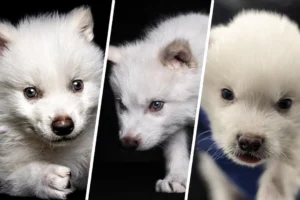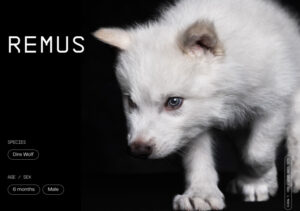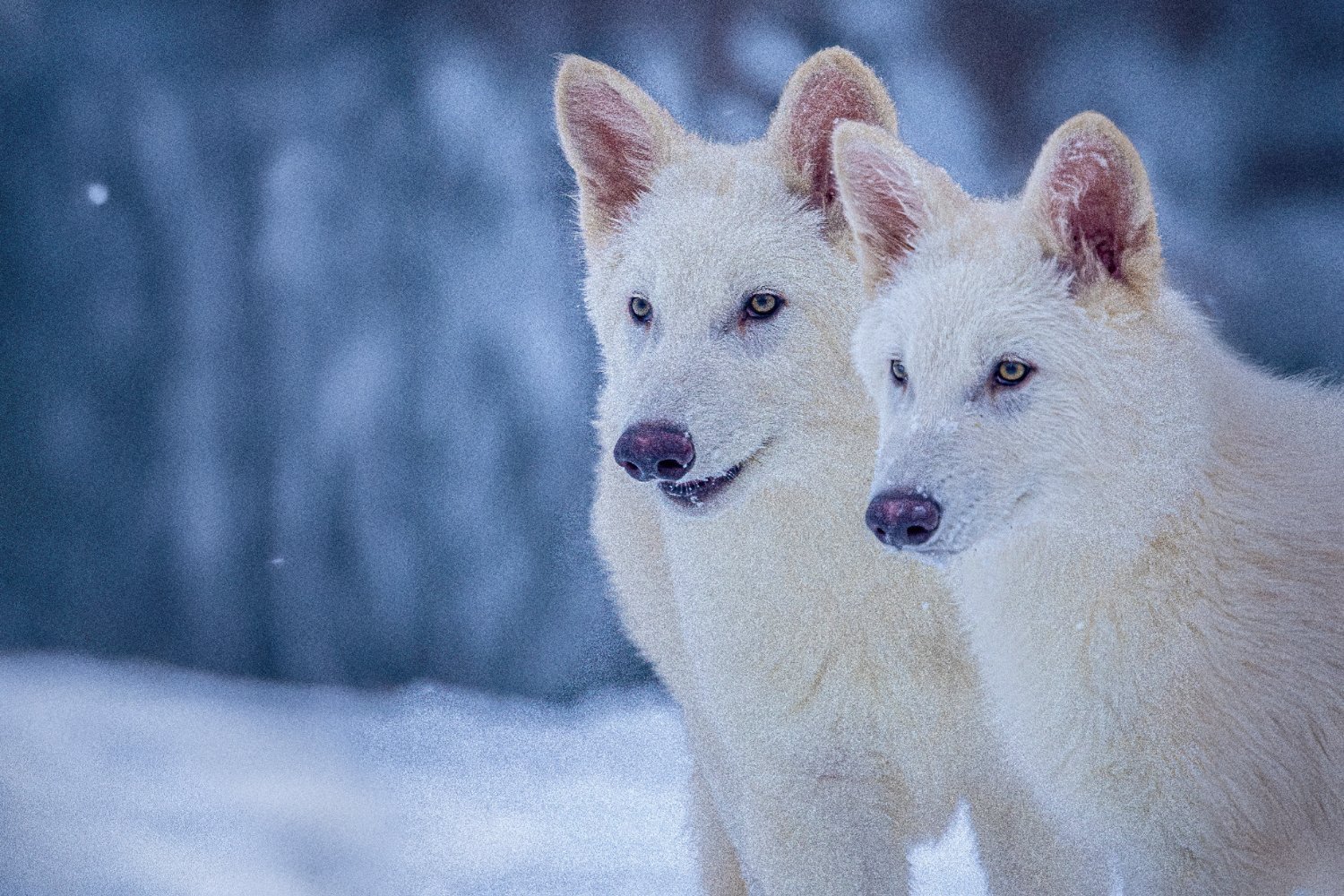Imagine a creature from the Ice Age strong, fierce, and long extinct suddenly walking the Earth again. Sounds like something out of a sci-fi movie, right? Well, it’s real. For the first time in more than 10,000 years, the dire wolf has returned, thanks to a Texas-based biotech company called Colossal Biosciences.
In a scientific breakthrough that could change how we think about conservation, Colossal has successfully engineered three living dire wolves. Yes, actual living, breathing pups! This isn’t just a big win for science it could be the beginning of a whole new chapter in how we protect and restore the planet.
Let’s break it down and see why this matters to us and the future of our world.
Meet the New Pack: Romulus, Remus, and Khalise
Colossal Biosciences announced that two male dire wolves, named Romulus and Remus, and one female, named Khalise, were born in a secure and highly protected facility. These pups aren’t just ordinary wolves. They are the genetic copies of the long-extinct dire wolf a predator that once ruled North America during the Ice Age.
Using fossils and DNA preserved for thousands of years, scientists carefully studied the genes of these ancient animals. With the help of CRISPR gene-editing technology, they inserted key traits like size, fur density, and jaw strength into modern dog-like embryos. These embryos were then carried by surrogate animals until birth.
The result? Three strong, healthy pups that look and act just like dire wolves once did.

Who (or What) Were the Dire Wolves?
The dire wolf, known scientifically as Canis dirus, was no ordinary wolf. These creatures were larger, tougher, and genetically different from the gray wolves we know today. They roamed the plains, forests, and icy lands of North America, hunting massive prey like bison and even young mammoths.
But after the Ice Age ended, their environment changed rapidly. Food became scarce. Human activity increased. Eventually, they disappeared completely, leaving behind only bones, legends, and mystery.
Until now.
Bringing Back the Past to Save the Future
So, why bring back an animal that went extinct 10,000 years ago?
According to Ben Lamm, the CEO of Colossal Biosciences, this is about more than just curiosity. “Romulus, Remus, and Khalise are the first step toward rewilding damaged habitats and reviving lost biodiversity,” he said.
The goal is to help restore balance in natural ecosystems where animals like the dire wolf once played a critical role. For example, large predators help control populations of herbivores like deer. When deer overgraze, forests suffer. But when predators keep them in check, nature stays healthier.
So, in a way, these pups could one day help fix what humans broke.
Myth Meets Modern Science
Even the names of the pups have meaning. Romulus and Remus are named after the twin brothers in Roman mythology who were raised by a she-wolf and later founded the city of Rome. This symbolizes rebirth and the return of something powerful.
Khalise is inspired by a fierce character from Game of Thrones, a show where dire wolves were strong and loyal companions. Her name adds a touch of pop culture and imagination to this historic moment.
Not Just About Wolves
Believe it or not, the dire wolf is just one of the species Colossal is working on bringing back. Their other projects include:
- The Woolly Mammoth, to help restore frozen ecosystems in the Arctic and fight climate change.
- The Tasmanian Tiger, a striped carnivore from Australia that went extinct in the 20th century.
- The Dodo, the famous flightless bird that vanished from island habitats hundreds of years ago.
The idea isn’t to turn Earth into a Jurassic Park, but to use science to heal ecosystems and increase biodiversity in areas damaged by humans.
The Pros and Cons of De-Extinction
Bringing animals back from extinction is exciting but also controversial. Here’s why:
Benefits:
- Restores balance in ecosystems by reintroducing key species.
- Increases biodiversity, which makes nature stronger and more resilient.
- Protects endangered species using the same gene-editing technology to boost weak populations.
- Sparks curiosity and learning among young people and scientists alike.
Challenges:
- What happens if the animals don’t adapt well to today’s environment?
- Could they spread diseases or behave in ways we can’t predict?
- Is it ethical to bring back animals just because we can?
- Could we be playing God with nature?
Colossal says they’re taking all this seriously. They’re working with wildlife experts, ethicists, and conservationists to make sure everything is done responsibly, safely, and with the animals’ welfare as a top priority.
So, What Happens Next?
Right now, Romulus, Remus, and Khalise are living safely under close watch. Scientists are studying how they eat, sleep, grow, and interact basically learning everything they can to make sure these animals are healthy and happy.
Eventually, they might be introduced into large, protected wildlife areas. Or, they may stay in research sanctuaries. Either way, their birth is a major moment in history a moment that shows how far we’ve come in science and how much potential we have to reverse the damage we’ve done to nature.

What Can Youth Like You Take From This?
This isn’t just a story about ancient wolves. It’s a reminder that the future of our planet depends on innovation, courage, and care.
Here’s what young people can do:
- Stay curious: Ask questions about science, nature, and the environment.
- Support conservation: Join eco-clubs, attend local cleanups, and learn about endangered species.
- Use your voice: Share stories like this with your friends and on social media. Raise awareness.
- Think big: The same creativity that brought back the dire wolf can be used to solve today’s problems from plastic pollution to climate change.
You are the generation that will face the biggest environmental challenges but also the one with the most powerful tools to fix them.
Final Howl: A New Chapter Begins
The return of the dire wolf is not just a scientific achievement it’s a symbol of hope. It shows that even after 10,000 years, we can still turn things around. We can use knowledge, passion, and technology to bring life back to where it was lost.
At PlanetEco FM, we believe in sharing stories that inspire change. Stories that remind us we are not powerless. We can protect our world and maybe even rebuild what we’ve destroyed.
Romulus, Remus, and Khalise have taken their first steps. Now it’s up to us to take ours.



